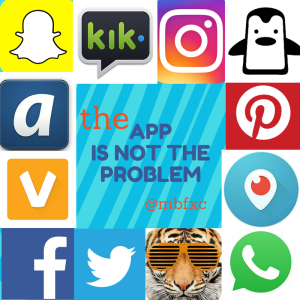Red Alert: The App is Not the Problem
 I can no longer remain silent about this.
I can no longer remain silent about this.
I’ve seen posts warning parents about the dangers of this app and that app with all sorts of sensational headlines. But, I have a spoiler alert for you: The app is not the problem.
We are so afraid that we can’t control or monitor what our teens are doing that we’ve labeled certain apps as “RED ALERT” when that red alert should really be placed on us. I get it though, it is easier to place blame on the app than to acknowledge or address the source of the problem.
Blocking and banning certain apps or sites will not change behaviors. Look at all the violence happening around our world. Somehow, we have forgotten that we are all members of the human race and what happens to one of us — happens to all of us. To quote from one of my all-time favorite movies, the Dead Poet Society, “That you are here — that life exists, and identity; that the powerful play goes on and you may contribute a verse. That the powerful play *goes on* and you may contribute a verse. What will your verse be?”
So, the solution begins with each of us. It’s time to contribute our verse to this critical conversation. We need to engage, educate and mentor our society on the choices and consequences of being human. We need to model what respect for ourselves and others really looks like and to invest in building community wherever we go.
I think the hack needed for education really begins and ends with the ability to humanize the person next to us, as well as across the screen. When we can do this, we can change culture and build communities at the local, global and digital level simultaneously.
Let’s stop the blame game, address the underlying problem and celebrate what makes us human.




